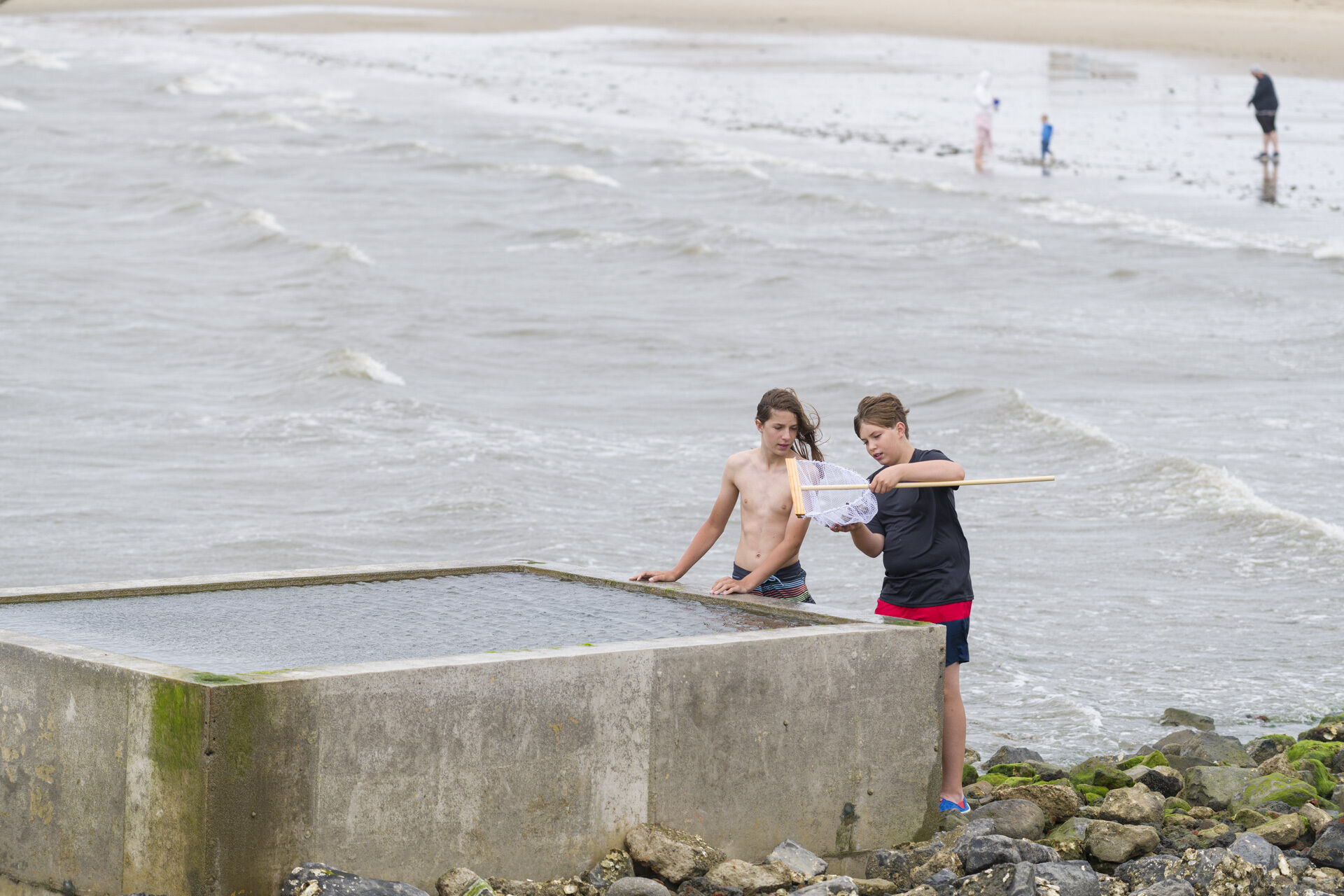Four tidal troughs
On the beaches of Wemeldinge there are four tidal troughs. Roughly six hours after ebb tide it is high tide (the water level rises), then the tide turns and it will be low tide (the water level drops again). At low tide, the hursts and mudflats stand clear of the water and the water recedes from ports. The beach is therefore larger at low tide and smaller at high tide. At low tide, the water around the tidal troughs has retreated, so you can see the underwater life of the Oosterschelde in them.
Discover the underwater life
Two of the tidal troughs are on the larger beach and two are on the smaller beach. Children can discover underwater life in these troughs. They bring the underwater world really close so you can look at the different species of young fish, anemones, shrimps, crabs and seaweed. Are you planning on visiting the tidal troughs? Then remember to bring a fishing net or a bucket! That will help you see the different forms of life really well.
What you may see in the tidal troughs:
- Barnacles: Barnacles are small crayfish that attach themselves to hard surfaces with their shells. At low tide they close their lids so they won’t dry out.
- Various species of seaweed: The different species of seaweed have the prettiest names, such as saw rack, devil’s tongue and Irish moss. Sea-lettuce has slimy leaves that are edible. Some weeds, such as rockweed and bladder-weed, have vesicles.
- Shrimps: Oosterschelde shrimps are typically greyish and transparent. Shrimps can bury themselves in the sand quickly and keep their eyes just above the sand.
- Anemones: Anemones look beautiful underwater! The Oosterschelde is home to the beadlet anemone, the dahlia anemone and the frilled anemone.
- Crabs: In the Oosterschelde, you will find different types of crabs; the green shore crab and the brush-clawed shore crab, to name a few.
- Periwinkles: Periwinkles are small sea snails. Here in Zeeland they are also called kreukels or krukels.
- Fish: You will also see little fish swimming in the tidal trough. Black gobies for instance, who can be found ‘basking’ in the sun on the rocks underwater.
- Oysters: The Oosterschelde is full of Japanese oysters! Watch out for their sharp edges though.
- Common limpet: During daytime, the common limpet is tightly attached to a rock, but at night this sea snail goes out and about. After his ventures, the common limpet returns to the exact same place it came from.

